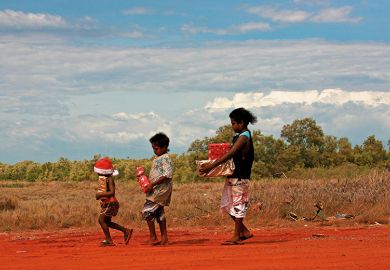Australian universities may have to wait months to find out how much of their research funding they will forfeit to pay for an increase in regional higher education provision.
The education department has confirmed that the Research Support Program, which helps universities cover the indirect costs of research, will be capped from next year to help underwrite the A$135 million (£75 million) regional package. The department said that further details would be outlined in the annual Mid-Year Economic and Fiscal Outlook.
While Myefo is usually released in November, budget rules do not require it to be handed down before the end of January. Last year’s Myefo, which contained a measure to freeze teaching funds, was released the week before Christmas.
This time universities can expect one of their research allocations to be frozen, but it is unclear how long the measure will last. The cost to the sector could accumulate at about A$15 million a year, disproportionately affecting the research-intensive Group of Eight institutions.
The Innovative Research Universities estimated that the freeze would cost its members a combined A$1.4 million next year, with the Australian Technology Network of Universities facing similar losses and the Regional Universities Network forfeiting about A$400,000. The Go8, by contrast, would suffer cuts of more than A$10 million.
Shortfalls of that magnitude, accumulated over four years, could cost the sector more than the amount the government has earmarked over the same timeframe to support new regional university places and scholarships.
Academic groups have lauded the regional funding but condemned the research cuts. The Go8 dismissed it as a “desperate” move to “sandbag regional seats”.
“Under the guise of supporting regional and remote students – which is critical policy and strongly supported by the Go8 – the government has carried out a targeted raid on base research funding,” said chief executive Vicki Thomson. “All the minister has done is set in motion a funding decision that pits university against university.”
ATN executive director Renee Hindmarsh said that the cut to research funding “comes off the back of a freeze to the demand-driven system, which had been the single most effective way of increasing regional participation in higher education”.
National Tertiary Education Union president Alison Barnes said that the government was “compounding one mistake after another. The irony is that the government’s freeze to university funding has hit hardest on regional universities…and is the reason they require urgent additional support.”
Science and Technology Australia said that it was “counter-intuitive” to cut backing for one aspect of higher education activity to pay for another. “Funding regional higher education by fencing in other segments of Australia’s broader research and development ecosystem is not the solution,” said chief executive Kylie Walker.
While the magnitude of the cut to research remains unclear, education minister Dan Tehan indicated that his department would help to pay for additional sub-bachelor and enabling places in regional areas. The government promised to fund 500 of these places in the May budget.
Mr Tehan said that the education department would write to universities inviting applications for these places.
He also released new details about the regional study hubs promised by the government in May. Sixteen groups have obtained funding for hubs in 22 locations, including seven in New South Wales, six in the Northern Territory, four in South Australia, two in Western Australia and one each in Queensland, Tasmania and Victoria.
Register to continue
Why register?
- Registration is free and only takes a moment
- Once registered, you can read 3 articles a month
- Sign up for our newsletter
Subscribe
Or subscribe for unlimited access to:
- Unlimited access to news, views, insights & reviews
- Digital editions
- Digital access to THE’s university and college rankings analysis
Already registered or a current subscriber?







